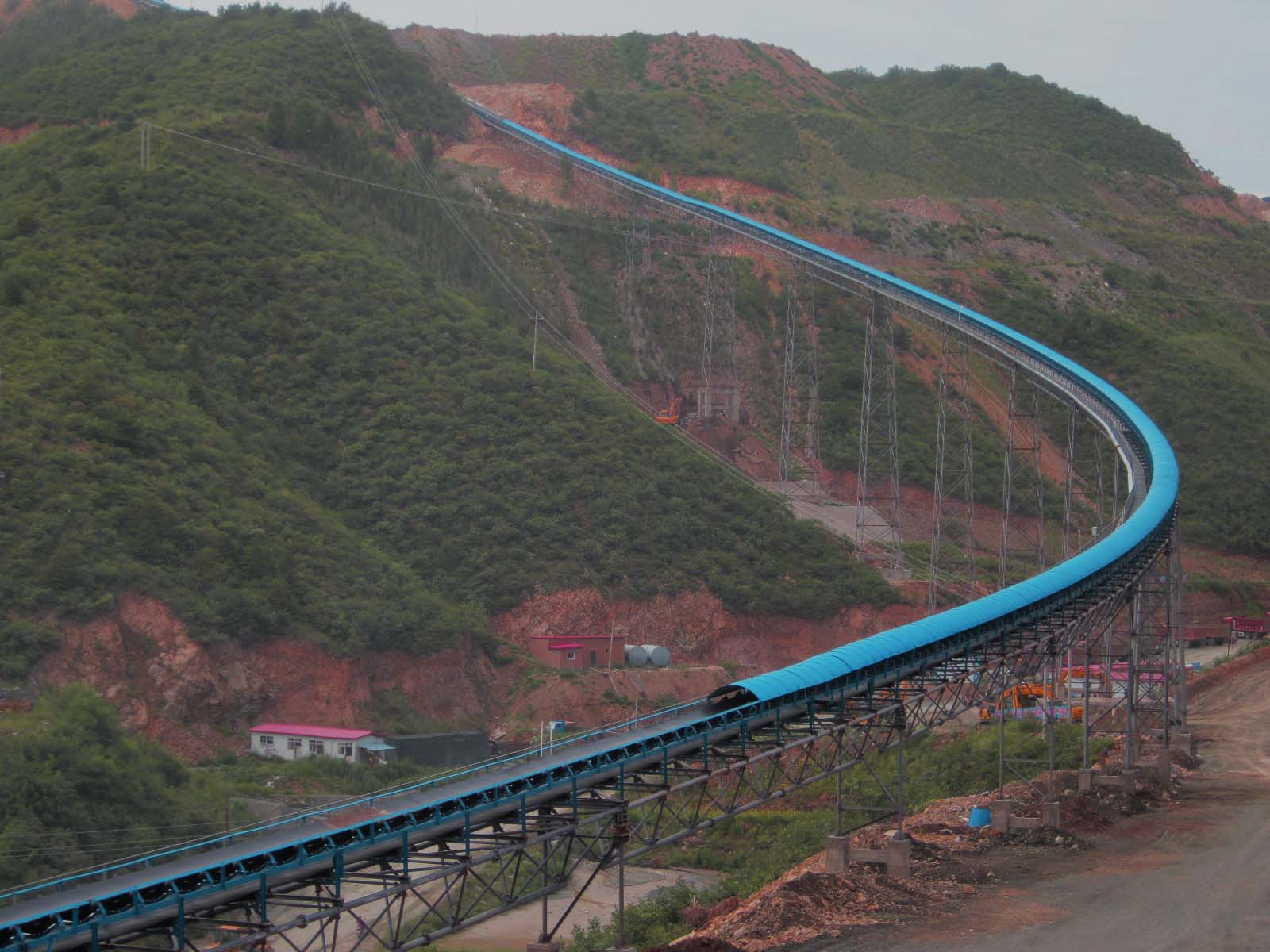In industrial production, the wide variety of conveying equipment makes it challenging to determine actual needs. Choosing between a Large Inclination belt conveyor and a Screw Conveyor often presents functional distinctions that can be difficult to navigate.
The Large Inclination Belt Conveyor operates at steep angles (typically 30°-90°) for continuous material handling. Its core components include Conveyor Belts, driving devices, rollers, and frames. Utilizing friction drive principles, it transports materials from lower to higher positions, accommodating various bulk materials including lump, granular, and powdery substances. The specially designed corrugated sidewall belt effectively prevents material slippage or spillage during inclined conveyance.
Key Advantages:
- Large conveying angles, breaking the 30° limit of conventional belt conveyors
- Broad material compatibility with minimal impact from size or density variations
- High capacity reaching thousands of tons per hour
- Energy-efficient operation, consuming ≈40% less power than screw conveyors
Typical Applications: Port handling systems, raw material transfer in steel mills, coal supply lines in thermal power plants, and mining operations requiring high-volume continuous transport.
Conversely, the Screw Conveyor propels materials through rotating helical blades. Its tubular or U-trough designs enable fully enclosed horizontal or slightly inclined transport (<20°), making it ideal for dust-sensitive operations.
Critical Features:
- Totally enclosed structure preventing material leakage
- Modular assembly for flexible layout configuration
- Integration capability with weighing, heating, or cooling functions
- Low-profile design for space-constrained installations
Prime Industries: Cement powder transport, chemical granular material transfer, grain distribution in silos, and construction mortar handling requiring environmental containment.
Core Differences Between Large Inclination Belt Conveyors and Screw Conveyors
1. Structural Configuration & Industry Applications
Large Inclination Belt Conveyors utilize open structures accommodating diverse material characteristics (particle size, moisture content). Essential in high-throughput scenarios: port operations, steel mill stockyards, and open-pit coal mines handling bulk materials.
Screw Conveyors employ fully enclosed designs (tubular/U-trough) eliminating dust emissions. Predominantly serve environmentally sensitive industries: food processing plants, pharmaceutical facilities, and chemical production lines requiring contamination control.
2. Conveying Methodology
Large Inclination Belt Conveyor: Friction-driven continuous transport handles materials >50mm (ores, coal lumps) and <10mm (sand, grains) with equal efficiency.
Screw Conveyor: Axial thrust from rotating blades suits only free-flowing powders/pellets (cement, plastic granules), with potential blockage risks for larger lumps.
3. Working Principle Comparison
Large Inclination Belt Conveyor: Materials rest on belts with corrugated sidewalls and cross cleats, climbing via static friction between belt and drive drum without relative slippage.
Screw Conveyor: Centrifugal force and tube-wall friction act on materials in the trough. Helical blade rotation propels axial movement, causing material degradation (≈3-8% breakage rate).
4. Structural Performance Characteristics
Large Inclination Belt Conveyor:
- Large-scale design (single units to 300m length)
- Low unit energy consumption (≈0.3kWh/t·100m)
- Simplified maintenance (roller replacement in 2-4hrs)
- Higher initial investment but lower operating costs
Screw Conveyor:
- Compact footprint (typically <600mm diameter)
- Superior sealing (dust emission <10mg/m³)
- High energy intensity (≈1.2kWh/t·100m)
- Complex repairs (requiring full screw shaft disassembly)
5. Selection Guide
| Dimension | Large Inclination Belt Conveyor | Screw Conveyor |
|---|---|---|
| Optimal Angle | 30°-90° steep incline | <20° slight inclination |
| Material Suitability | Lump ore/bulk grain/coal | Powders/small granules |
| Conveying Distance | ★★★★☆ (up to 500m) | ★★☆☆☆ (typically <50m) |
| Environmental Needs | Requires dust hoods | Naturally dust-tight |
| Maintenance Cycle | 6-12 months major service | 3-6 months seal replacement |
| ROI Period | >5 year projects preferred | <3 year projects suitable |
Technology Evolution: Modern large-inclination conveyors now feature hydraulic adjustment systems enabling 30-75° variable angles. Meanwhile, shaftless screw conveyors overcome traditional limitations, handling fibrous/sticky materials that redefine application boundaries for both equipment types.

 ZOOMRY
ZOOMRY


